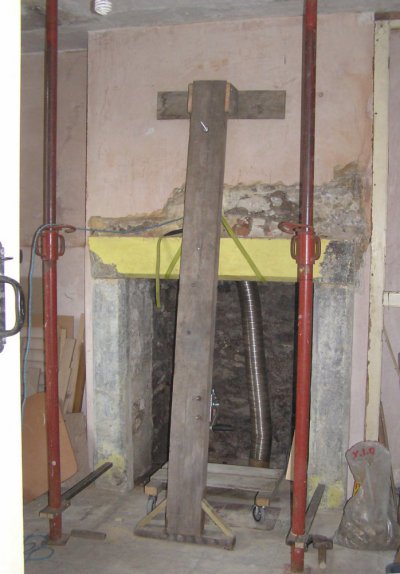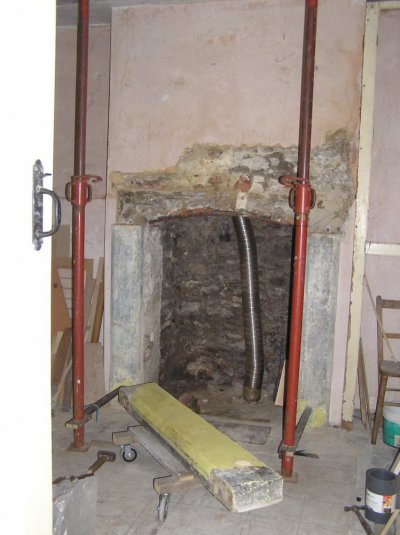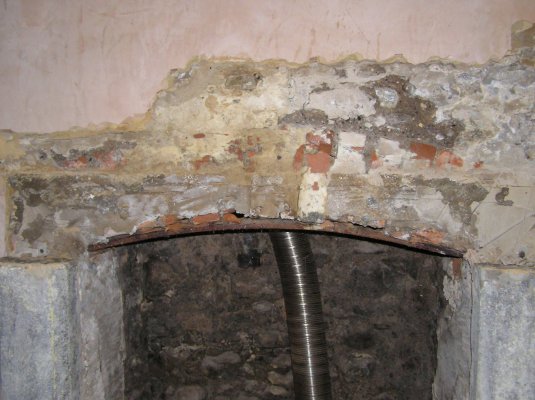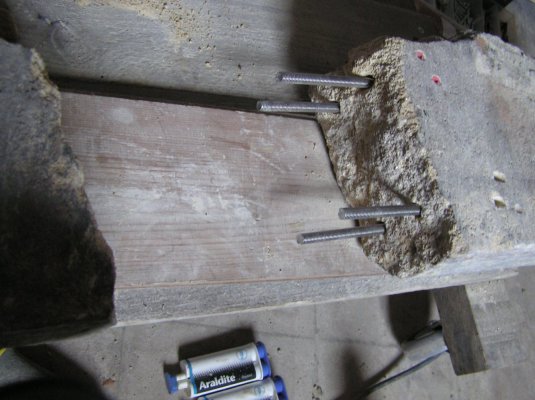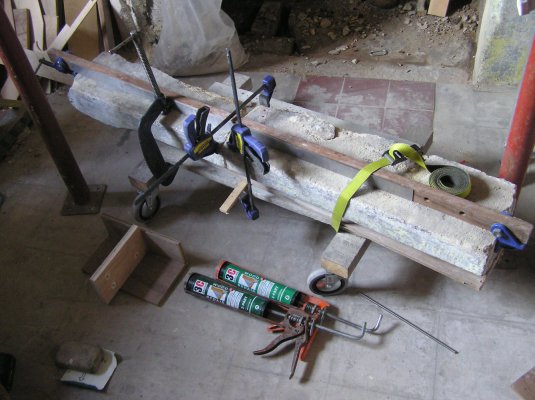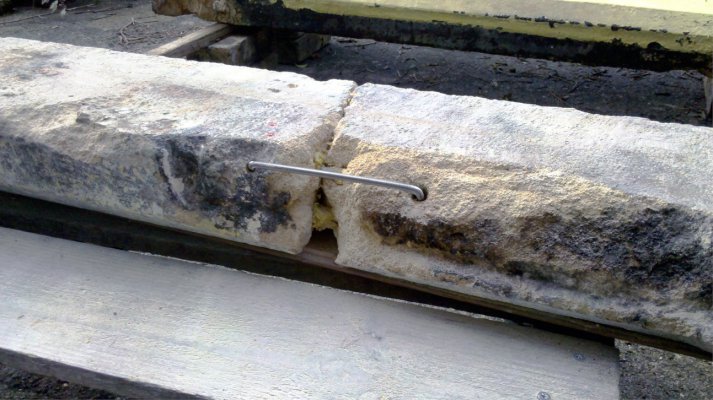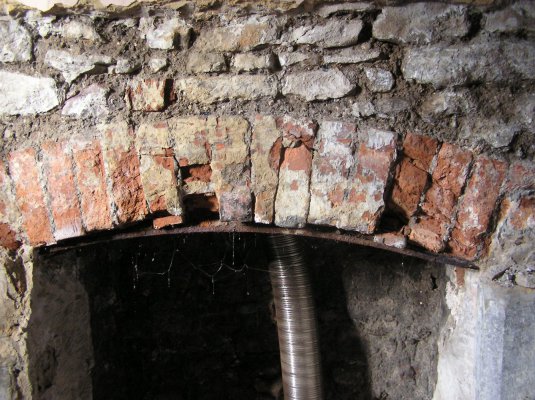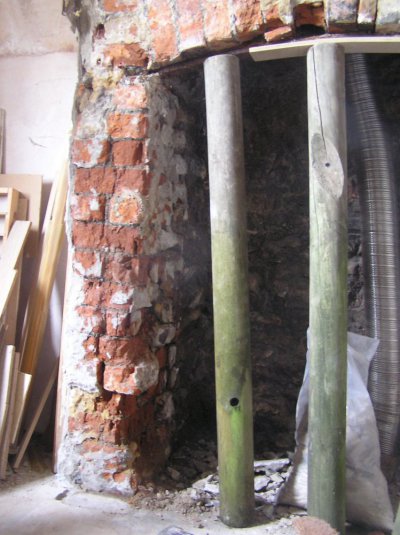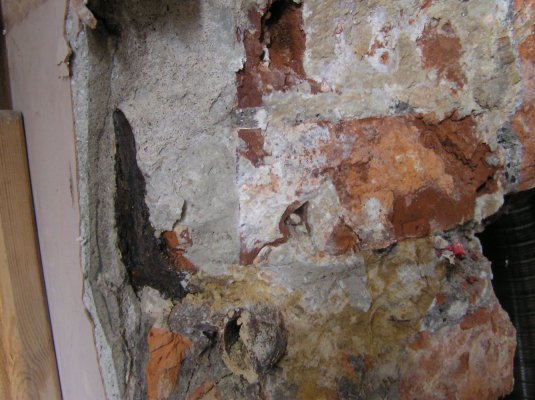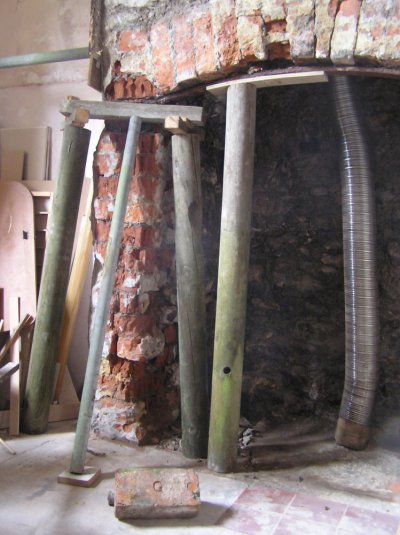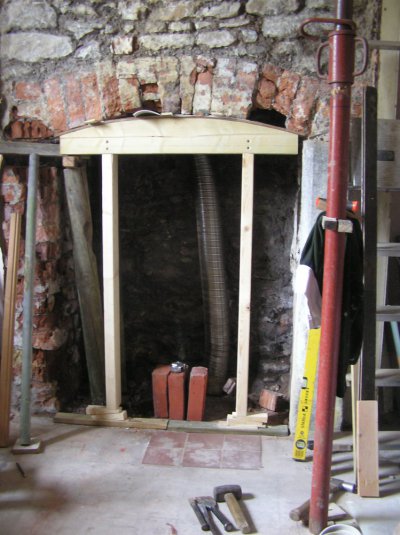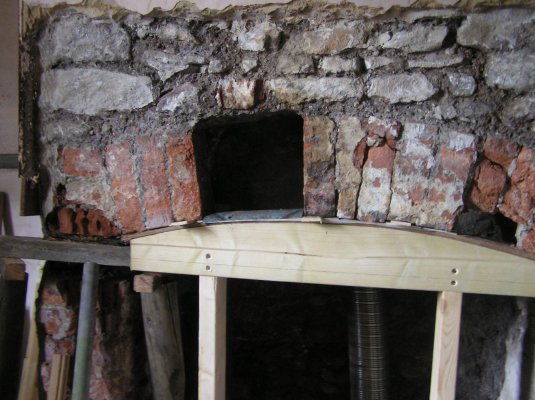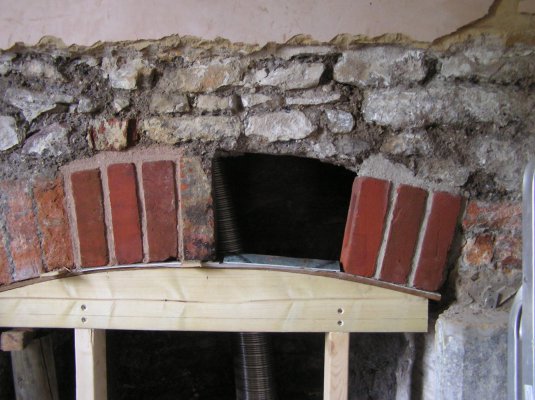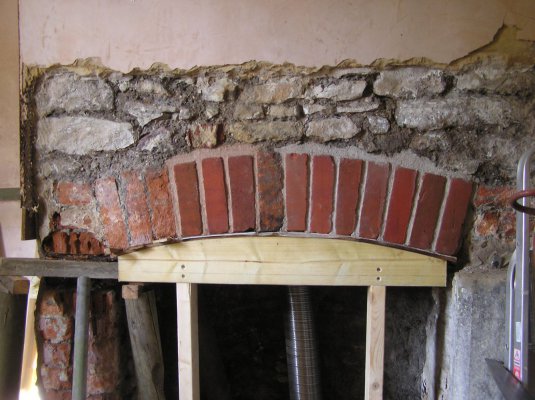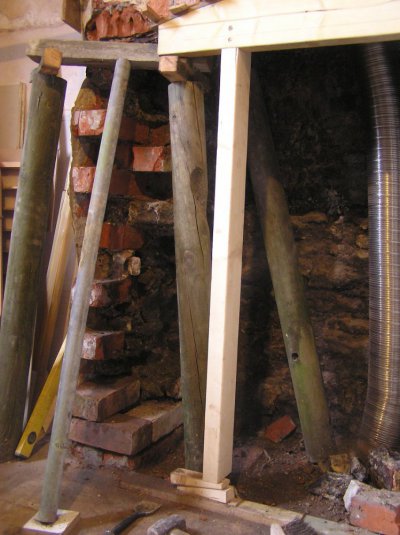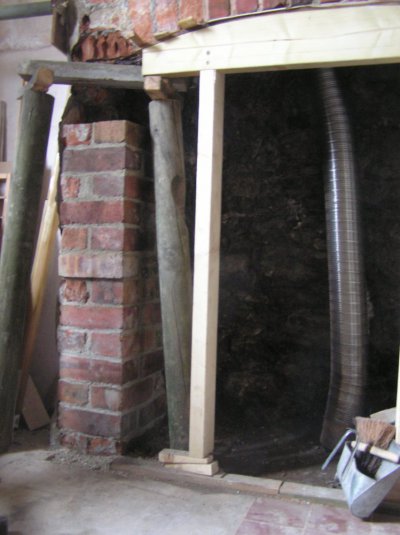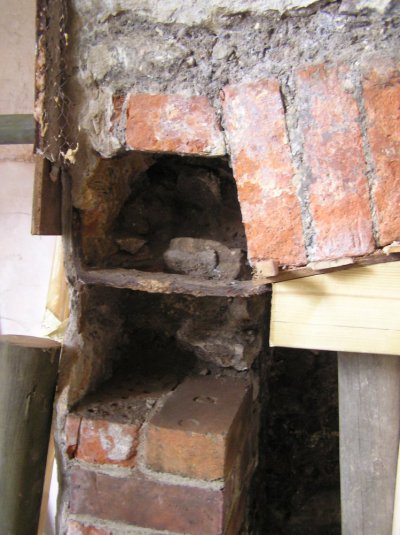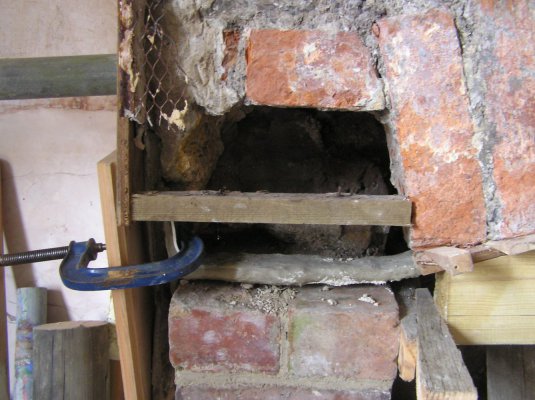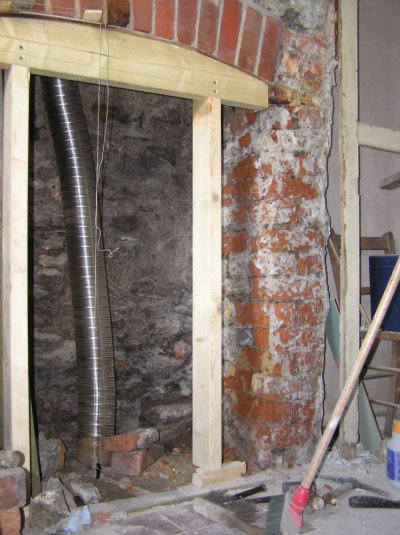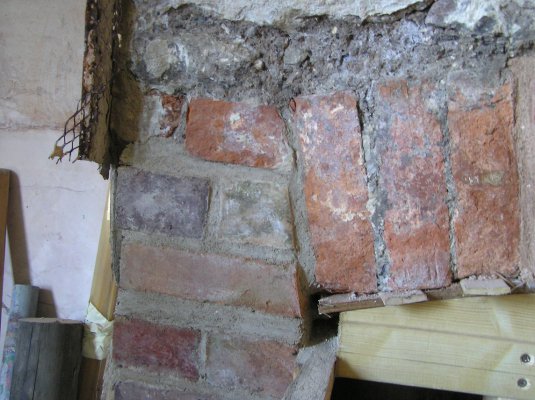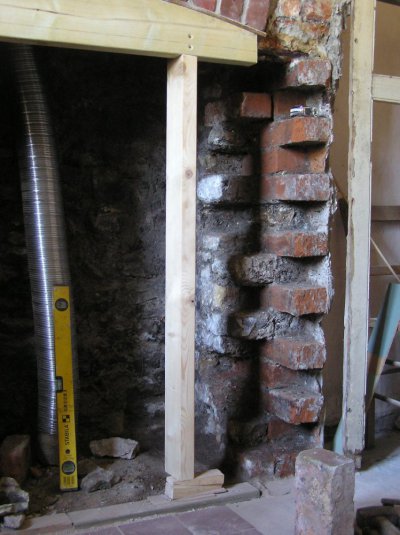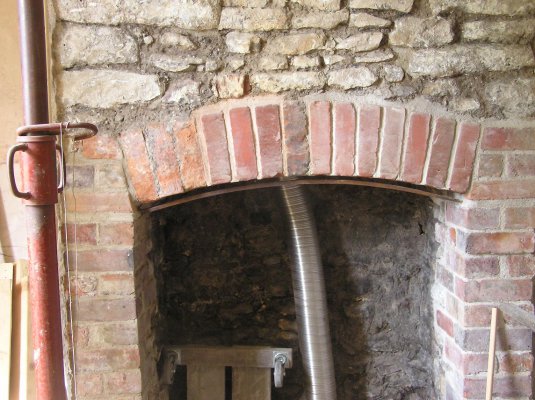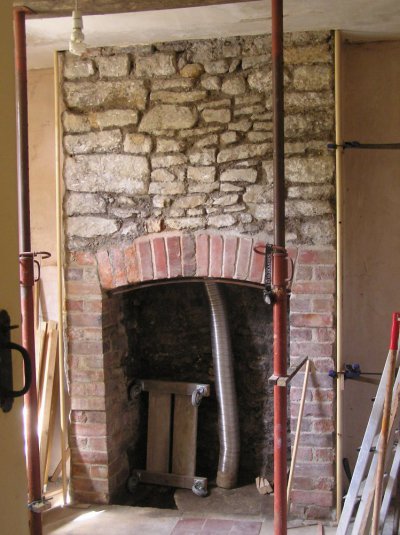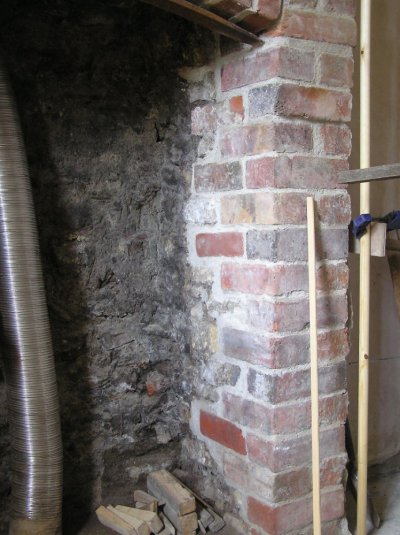Stevers
Member
- Messages
- 971
- Location
- Mendip Hills
I'm a habitual DIY'er about to tackle a nasty job that I've managed to put off until now. In the semi-basement of my Victorian stone house lurks a chimney breast for a kitchen range that in 1997 was professionally 'damp proofed' using a cement slurry system and finished with a hard cement render and gypsum plaster. This has suffered heavy efflorescence from what looks like sulphate attack. The whole basement was treated in this way and much of it suffered from efflorescence after that initial treatment. Eventually the damp proofers were persuaded to return and this time an SBR cement slurry was used. In this room they just knocked the plaster off, applied SBR slurry and re-plastered. In the rest of the basement, the render and plaster were removed and re-finished with the SBR Slurry, a hard SBR cement render and gypsum plaster. The remedial work in the other half has been successful so far, this side mostly so, but only the sides of the chimney breast were re-treated at that time.
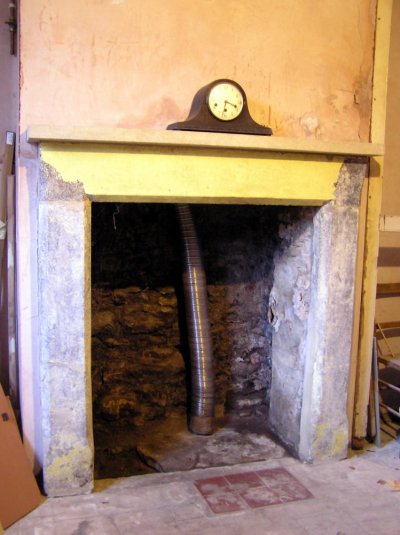
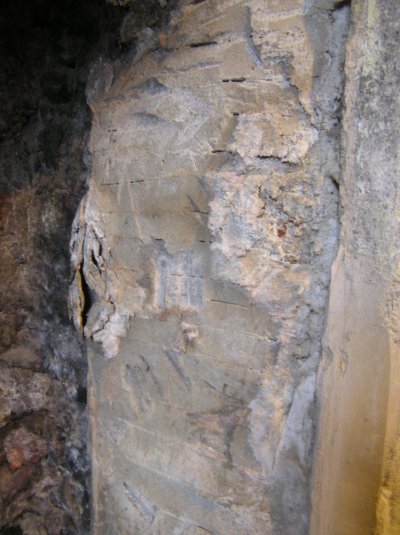
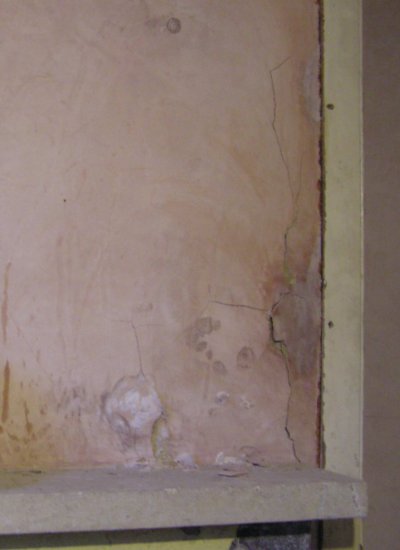
The house is built on a slope and there is no apparent hydrostatic pressure against the partially buried walls. Behind the wall is a set of concrete steps and behind that a retaining wall and garden that's about 4" above ground floor level. Under the thin OPC screed seen here, the floor is Blue Lias slabs on clay (very large with very tight joints), and if left to breath, everything is reasonably civilised down there. The floor does appear to be a little damp round the fireplace though, but I haven't removed all of the screed yet to confirm the exact state of play there.
This project is to take down the fireplace surround, repair and refinish the chimney breast before replacing the surround which will need plastic stone repair. After removal of the modern render, the contaminated limestone rubble stonework will be raked out and repointed to make a sound base for whatever follows. Back in 1997 there was some very rickety brickwork on the front of the chimney breast, this problem was not addressed then, so I will rebuild that this time. Originally I contemplated using sulphate resisting cement, but this is only available to me in Somerset by the pallet load. I believe that I could use a good NHL instead - something I would use for stone repairs in any other circumstance. To match what has appeared to work in the rest of the basement, I could then apply two coats of SBR cement slurry, then a hard cement SBR render with a gypsum plaster finish - Thistle One Coat is what I have used for this elsewhere. Perhaps better, in more of a hairy sandal sort of way, I could apply an NHL base coat and lime top coat finish without the SBR slurry. Either way I'll be re-instating the 1" wooden staff beads to give me the nicely rounded corners that this chimney breast would have had originally.
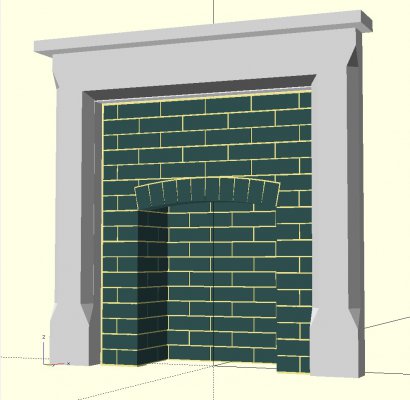
The room will be a hobby room, so the resulting working environment need be no better than that of a good shed. Partly to justify the sunk cost of the chimney liner and gas feed that was installed twenty-five years ago, I am going to put a small gas coal effect stove in. It's a huge opening for such a stove, so I was going to build a brick insert using blue engineering brick and nice tight lime mortar joints, over a slate hearth. In general I'm definitely in favour of things being able to breath; I think it would be bad news to seal both sides of any walls, and the void behind the brick insert could perhaps be vented, to allow the resulting cavity to breath. Having the liner isn't great for ventilating the 35' long chimney flue either, but perhaps that could be vented part way up if the gas regs allow it. That chimney stack has five pots, we suspect that the mid-feathers are shot to pieces since this flue couldn't pass a smoke test even in 1998, so it might actually be partly ventilated by one or more of the neighbouring flues that have clay cowls.
It's good to get all that off my chest. Needless to say if I was sure of exactly what I need to do to have the best chance of success, I wouldn't be posting this!



The house is built on a slope and there is no apparent hydrostatic pressure against the partially buried walls. Behind the wall is a set of concrete steps and behind that a retaining wall and garden that's about 4" above ground floor level. Under the thin OPC screed seen here, the floor is Blue Lias slabs on clay (very large with very tight joints), and if left to breath, everything is reasonably civilised down there. The floor does appear to be a little damp round the fireplace though, but I haven't removed all of the screed yet to confirm the exact state of play there.
This project is to take down the fireplace surround, repair and refinish the chimney breast before replacing the surround which will need plastic stone repair. After removal of the modern render, the contaminated limestone rubble stonework will be raked out and repointed to make a sound base for whatever follows. Back in 1997 there was some very rickety brickwork on the front of the chimney breast, this problem was not addressed then, so I will rebuild that this time. Originally I contemplated using sulphate resisting cement, but this is only available to me in Somerset by the pallet load. I believe that I could use a good NHL instead - something I would use for stone repairs in any other circumstance. To match what has appeared to work in the rest of the basement, I could then apply two coats of SBR cement slurry, then a hard cement SBR render with a gypsum plaster finish - Thistle One Coat is what I have used for this elsewhere. Perhaps better, in more of a hairy sandal sort of way, I could apply an NHL base coat and lime top coat finish without the SBR slurry. Either way I'll be re-instating the 1" wooden staff beads to give me the nicely rounded corners that this chimney breast would have had originally.

The room will be a hobby room, so the resulting working environment need be no better than that of a good shed. Partly to justify the sunk cost of the chimney liner and gas feed that was installed twenty-five years ago, I am going to put a small gas coal effect stove in. It's a huge opening for such a stove, so I was going to build a brick insert using blue engineering brick and nice tight lime mortar joints, over a slate hearth. In general I'm definitely in favour of things being able to breath; I think it would be bad news to seal both sides of any walls, and the void behind the brick insert could perhaps be vented, to allow the resulting cavity to breath. Having the liner isn't great for ventilating the 35' long chimney flue either, but perhaps that could be vented part way up if the gas regs allow it. That chimney stack has five pots, we suspect that the mid-feathers are shot to pieces since this flue couldn't pass a smoke test even in 1998, so it might actually be partly ventilated by one or more of the neighbouring flues that have clay cowls.
It's good to get all that off my chest. Needless to say if I was sure of exactly what I need to do to have the best chance of success, I wouldn't be posting this!

